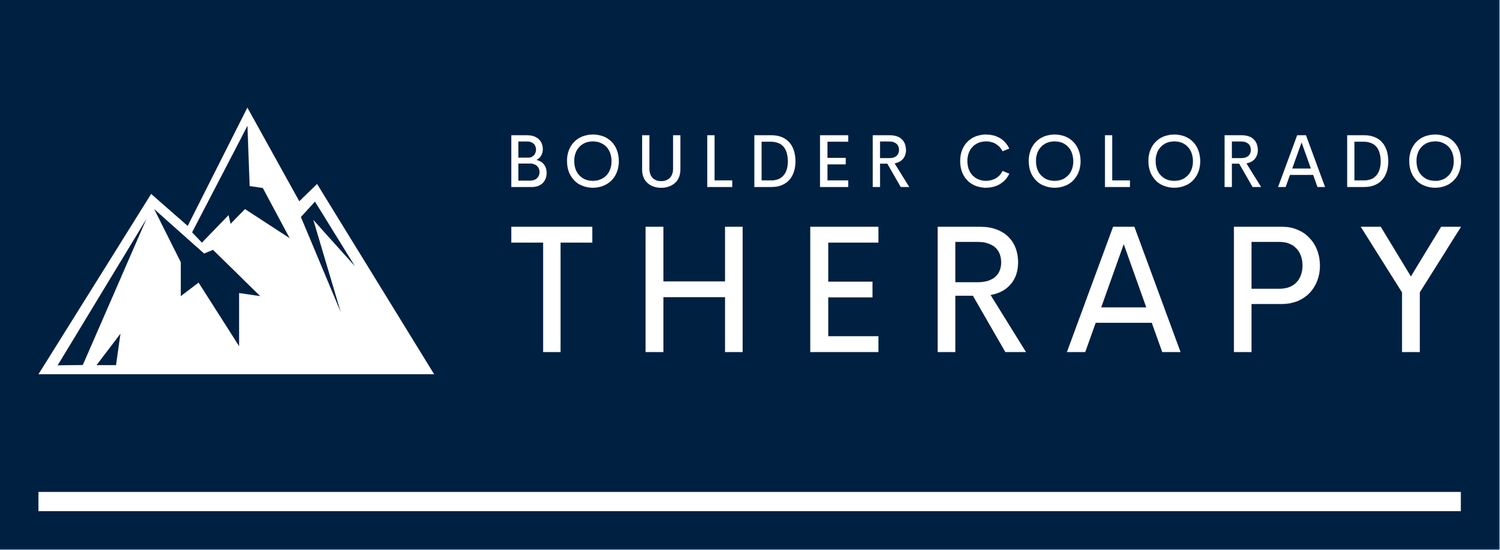How Do I Know If I Have PTSD?
Post-Traumatic Stress Disorder (PTSD) can manifest in diverse and complex ways, impacting both mental and physical well-being. Following exposure to a traumatic event, individuals may experience persistent symptoms such as heightened emotional or physical arousal, intrusive and distressing thoughts, avoidance of triggers associated with the trauma, and significant shifts in mood and cognitive patterns. These responses, while challenging, are common indicators of PTSD and highlight the need for compassionate and professional support to navigate the healing process.
PTSD can affect every aspect of life, often in ways that feel overwhelming or isolating. Below are some common challenges our clients have successfully worked through with our support. Do any of these resonate with your experiences?
Avoidance Behaviors: Steering clear of people, places, or situations that trigger reminders of the trauma.
Intrusive Symptoms: Recurring nightmares, flashbacks, distressing memories, or intrusive thoughts related to the traumatic event.
Heightened Arousal: Persistent hypervigilance, difficulty relaxing, an exaggerated startle response, or irritability and frequent anger outbursts.
Cognitive Challenges: Trouble concentrating, memory lapses, or feeling mentally "foggy" or detached.
Shifts in Mood and Beliefs: Overwhelming feelings of shame, guilt, or self-blame; diminished interest in previously enjoyable activities; or negative thoughts about oneself, others, or the world.
Emotional Disconnect: Feeling numb, detached, or isolated from loved ones or having difficulty experiencing positive emotions, such as love or happiness.
Physical Symptoms: Chronic pain, fatigue, muscle tension, or physical symptoms without an identifiable medical cause that may be linked to trauma.
Reactivity to Triggers: Experiencing intense distress or physical reactions (e.g., sweating, rapid heartbeat) when reminded of the trauma.
Sleep Disturbances: Difficulty falling or staying asleep, or restless sleep not related to nightmares.
Self-Destructive Behaviors: Engaging in risky or harmful activities, such as substance abuse or reckless actions, as a coping mechanism.
Social and Interpersonal Challenges: Struggles with trust, difficulty maintaining relationships, or feelings of alienation from others.
PTSD symptoms can vary widely, often fluctuating in intensity over time. If any of these resonate with you, know that you are not alone. With compassionate support and evidence-based approaches, it is possible to navigate these challenges, regain a sense of safety, and rebuild a life of connection and purpose.
Why Do I Have PTSD? Where Does PTSD Come From?
PTSD develops in response to experiencing or witnessing traumatic events that overwhelm the ability to cope. Trauma impacts everyone differently, and not everyone who experiences trauma will develop PTSD. However, certain situations and experiences are more commonly associated with its onset:
Assault: Survivors of physical, emotional, or sexual assault often develop PTSD due to the intense fear and violation of personal safety associated with these events.
Combat: Veterans exposed to life-threatening situations, injuries, or witnessing harm to others during combat may develop PTSD, sometimes referred to as "combat stress."
Childhood Trauma: Early adverse experiences, such as abuse, neglect, bullying, or household dysfunction, increase vulnerability to PTSD later in life.
Accidents: Experiencing severe accidents, such as car crashes, workplace injuries, or aviation incidents, can leave lasting psychological scars.
Natural Disasters: Surviving earthquakes, hurricanes, floods, wildfires, or other disasters may lead to PTSD, especially when there is loss of life or prolonged danger.
Medical Trauma: Facing a life-threatening illness, undergoing invasive medical procedures, or witnessing others in severe distress can contribute to PTSD.
Loss and Grief: Experiencing the sudden or traumatic loss of a loved one can result in feelings of despair and PTSD symptoms.
Violence or Crime: Witnessing or being a victim of robbery, terrorism, mass violence, or other crimes can lead to ongoing trauma responses.
Occupational Trauma: First responders, healthcare workers, journalists, and others regularly exposed to human suffering or danger may develop PTSD over time.
PTSD doesn't just stem from the event itself—it also depends on factors like individual resilience, support systems, previous trauma, and coping mechanisms. Regardless of the cause, it’s important to recognize that PTSD is a natural response to extraordinary stress, and healing is possible with the right support and resources.
How Anxiety Commonly Presents Alongside PTSD
Anxiety is a widespread mental health condition that can disrupt daily life and well-being. Recognizing its symptoms is essential for seeking support.
Anxiety often co-occurs with PTSD and can manifest as:
Irritability or Restlessness: Persistent feelings of unease or tension may disrupt daily life, making it difficult to relax, focus, or find comfort in routine activities.
Muscle Tension: Chronic tightness or stiffness in the body, often in the neck, shoulders, or back, can exacerbate stress and contribute to the physical toll of anxiety.
Sleep Disturbances: Difficulty falling or staying asleep, insomnia, or nightmares can disrupt restorative sleep, leading to fatigue, difficulty functioning, and heightened emotional distress during the day.
Excessive Worry or Apprehension: Persistent, irrational fears or an overwhelming sense of dread can consume thoughts, making it hard to concentrate on tasks or enjoy the present moment.
Difficulty Concentrating: Struggling to focus, stay organized, or process information can lead to frustration and feelings of inadequacy, impacting work, school, or personal responsibilities.
Panic Attacks: Sudden and intense episodes of fear or anxiety, often accompanied by physical symptoms such as chest pain, rapid heartbeat, shortness of breath, dizziness, or a sense of impending doom.
Physical Symptoms: In addition to muscle tension, anxiety may cause headaches, stomachaches, nausea, or other somatic complaints, sometimes without a clear medical explanation.
Avoidance Behaviors: Avoiding situations, people, or places associated with feelings of anxiety can limit opportunities for growth, connection, or self-discovery.
Getting Help for PTSD From Boulder Colorado Therapy
At Boulder Colorado Therapy, we offer personalized PTSD treatment designed to support individuals on their journey to healing and recovery. Our compassionate, evidence-based approach empowers clients with effective tools to navigate trauma and regain a sense of balance and well-being.
Benefits of Early Treatment:
Improved overall well-being
Reduction in symptom intensity
Development of effective coping strategies
Prevention of long-term mental health challenges
Increased likelihood of sustained recovery
Seeking help early can make a significant difference in overcoming PTSD and reclaiming your life. Let us support you in taking the first step toward healing.
How Can Therapy for PTSD Help You?
At Boulder Colorado Therapy, our approach to PTSD treatment is designed to empower you on your healing journey. Here’s what our work together may involve:
Collaborative Goal-Setting: Together, we’ll identify your strengths and set practical, meaningful goals to help you unlock your potential and regain control over your life.
Trauma Processing: Using evidence-based interventions, we’ll work to reduce the emotional intensity tied to traumatic memories, fostering a sense of relief and resilience.
Skill Building: We’ll provide you with practical tools and self-care strategies to manage distressing symptoms and emotional challenges caused by trauma.
Integration and Closure: As you progress, you’ll gain new skills and insights that support lasting growth, healing, and a renewed sense of self.
In therapy, you’ll find a safe, supportive space to confront trauma, challenge limiting beliefs, and develop healthy coping mechanisms. Using evidence-based modalities such as Cognitive Behavioral Therapy (CBT), Exposure Therapy, and Eye Movement Desensitization and Reprocessing (EMDR), we aim to help you reclaim your life and move forward with confidence.
Why Therapy Is Essential for Lasting PTSD Recovery
Medication and coping exercises can play a role in symptom relief, but it typically focuses on alleviating short-term distress rather than addressing the root causes of trauma.
Therapy, on the other hand, offers a holistic approach that delves deeper into the underlying issues, helping you process the trauma and build sustainable coping strategies. By engaging in therapeutic practices, you gain the tools and insights needed not only to manage symptoms but to reclaim your life and create lasting healing beyond the immediate effects of trauma.
What is the Typical Timeframe to See Progress with my PTSD in Therapy? What if it Doesn’t Work?
The time it takes to see progress in PTSD therapy varies based on several factors, including the severity of trauma, the presence of co-occurring conditions, your engagement in mindfulness practices, and your readiness for change. Some individuals may experience noticeable improvements in a shorter timeframe, while others may require more extended support.
At Boulder Colorado Therapy, we prioritize a collaborative approach where your feedback plays a crucial role in the process. Together, we’ll regularly assess your progress, adjust treatment strategies as needed, and explore alternative approaches to ensure that you’re receiving the support that best fits your needs. Our goal is to support your healing in the most efficient and effective way possible.
What Are Other Effective Treatments That Can Complement PTSD Therapy?
In addition to traditional talk therapy and Cognitive Behavioral Therapy (CBT), we offer a range of innovative and proven approaches that can enhance the effectiveness of PTSD treatment. These therapies target trauma from various angles, providing holistic support for healing and recovery. Below are some of the advanced treatments we use:
Internal Family Systems (IFS) Therapy: IFS therapy explores the various “parts” or aspects of the self that can become fragmented or wounded due to trauma. This approach works to heal these parts by fostering compassion and integration, helping individuals understand their internal conflicts and emotional responses, and ultimately supporting a sense of wholeness and balance.
Sensorimotor Psychotherapy: This specialized approach combines somatic techniques with traditional talk therapy to identify and address the physical manifestations of trauma. By enhancing body awareness and incorporating movement strategies, Sensorimotor Psychotherapy helps individuals process and release traumatic memories stored in the body. This technique fosters emotional healing by allowing clients to reconnect with their bodily sensations, ultimately promoting a deeper sense of well-being and recovery.
Eye Movement Desensitization and Reprocessing (EMDR): EMDR is a unique approach that helps individuals process and integrate traumatic memories through guided eye movements. This technique facilitates the reprocessing of distressing events, reducing their emotional charge. It has been shown to promote rapid healing by encouraging the brain to reframe traumatic memories in a less distressing way.
Trauma-Focused Cognitive Behavioral Therapy (TF-CBT): Specifically designed for individuals dealing with trauma, TF-CBT combines the principles of traditional CBT with trauma-sensitive strategies. It works to alleviate symptoms of PTSD by addressing distressing memories, teaching coping skills, and helping individuals regain a sense of safety and control in their lives.
Somatic Experiencing: This body-focused therapy targets the physical effects of trauma by helping individuals tune into bodily sensations and release pent-up tension or energy stored in the nervous system. Somatic Experiencing allows individuals to process trauma through physical awareness, reducing the impact of past trauma on emotional and physical well-being.







